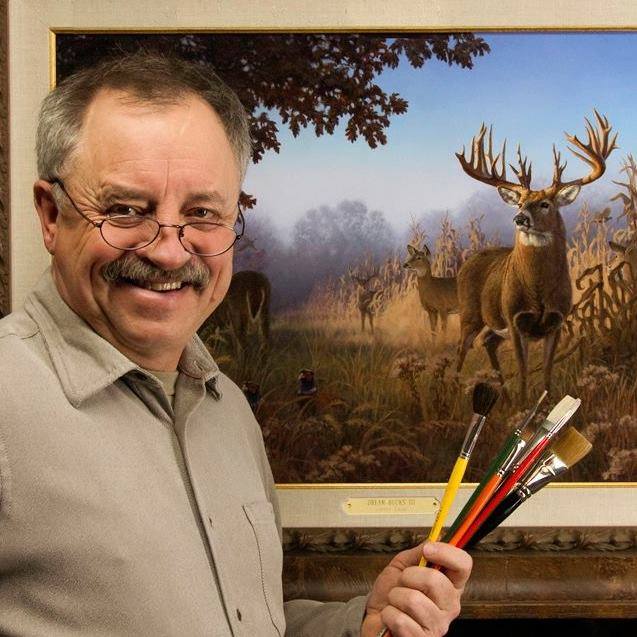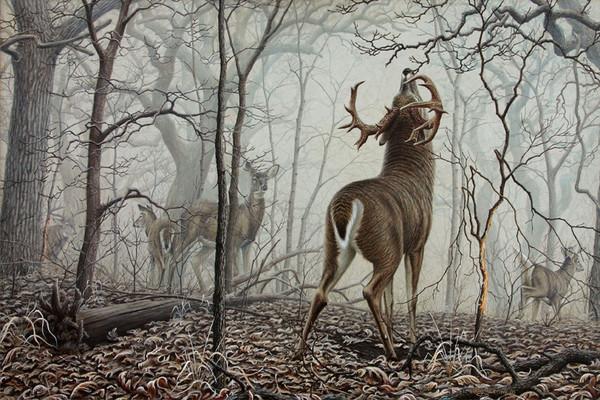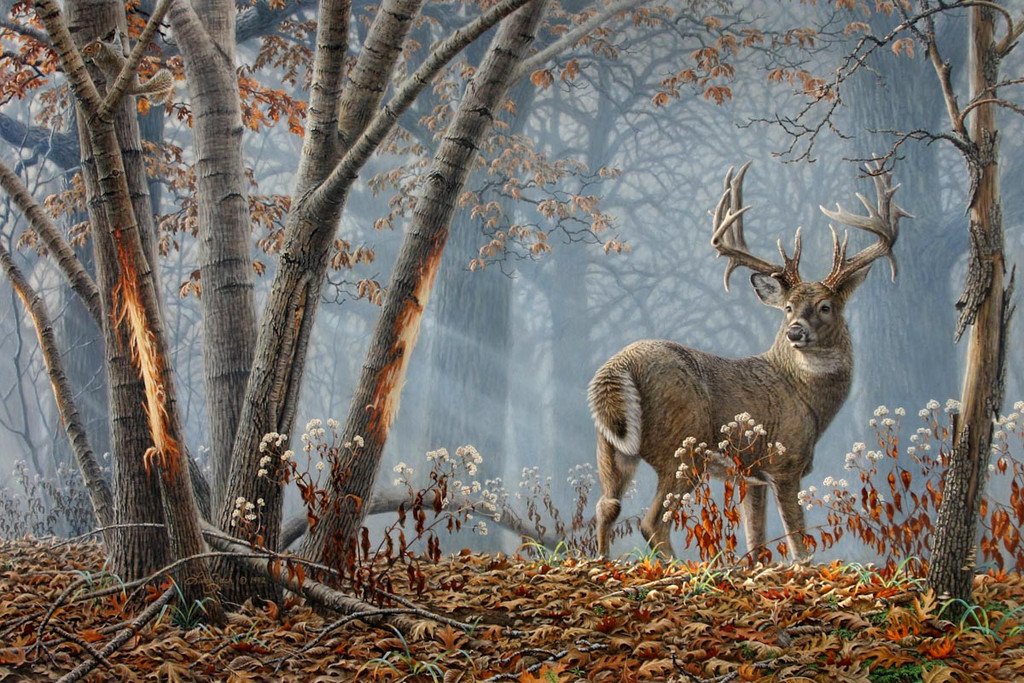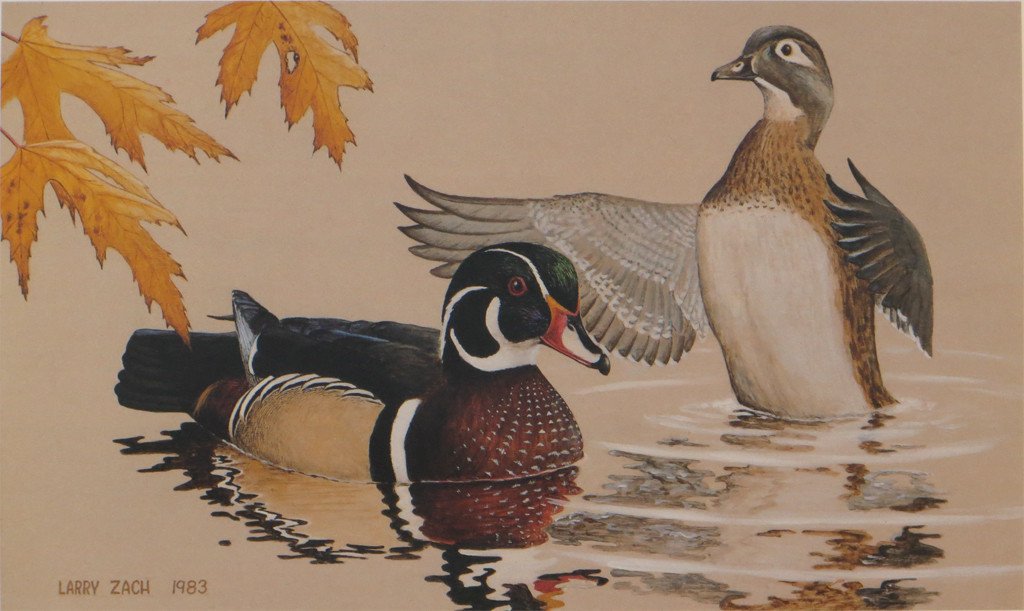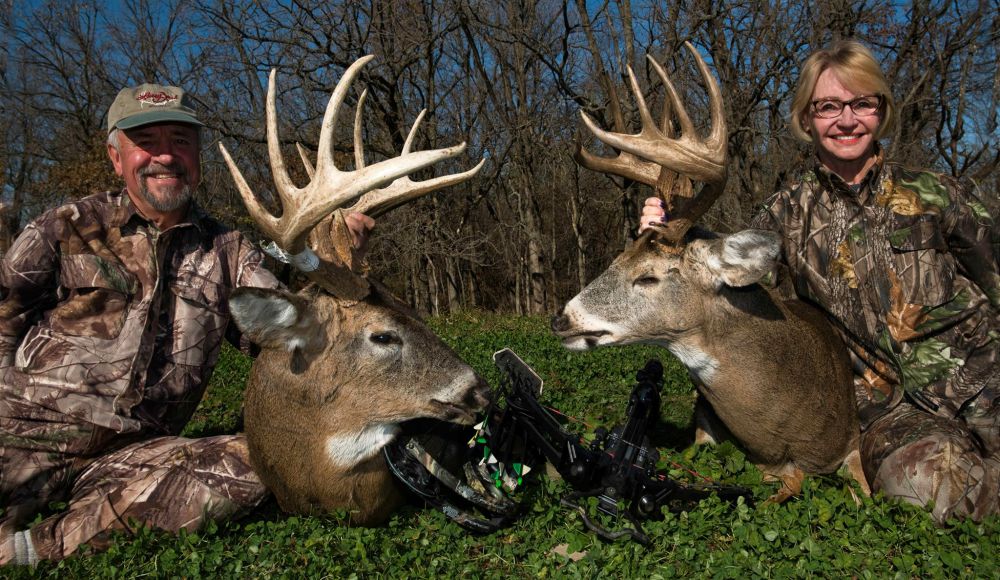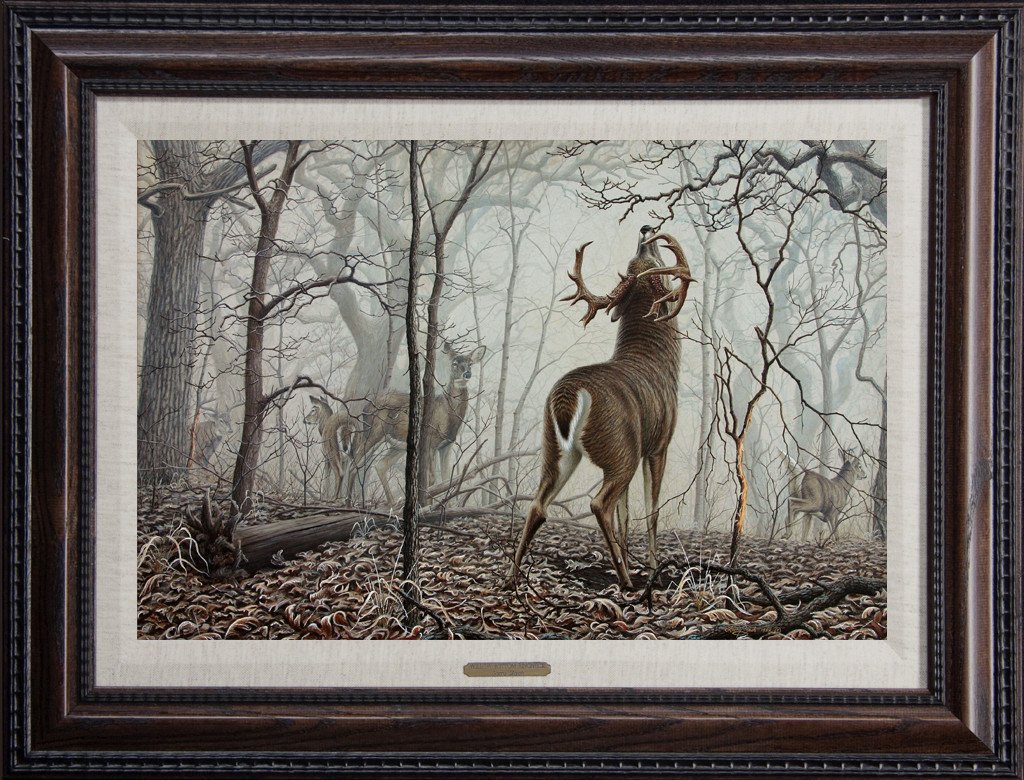Okay, so I’m not a trained art critic. But I am a fan of wildlife art, and for the last 40 years or so I’ve kept a pretty close eye on those artists who have the uncanny ability to capture an outdoor scene — whitetails in particular — in a way that appeals to avid deer hunters. Sure I enjoy the vivid colors depicted in a whitetail painting by Terry Redlin, and it’s hard to beat the deer creations by Michael Sieve (my favorite of his is called After the Storm), but in my humble opinion, the best of the best is Larry Zach.
Bowhunter + Artist = Brilliance
Yes, Larry Zach paints many outdoor subjects, and all of them are outstanding, but it’s his work on whitetails that causes me to place him at the top of the deer artist podium. And while I love his Dream Bucks, Old Rivals and Big (City, Timber, Country) Bucks series my all-time favorite Zach creation is “November Frost – Whitetail.” I have a small framed canvas of it in my home, and I often take a look at the painting’s details, especially on those frosty fall mornings when work or other commitments keep me from hunting.
Larry's work is created with oil and acrylic paints. Here’s what Zach had to say about his November Frost – Whitetail painting:
The setting is a cold, foggy November day in a mature deciduous forest. The forest floor is covered with a heavy frost. The actual scene exists only in my imagination, though many deer hunters have told me it looks exactly like the place they like to hunt. The background trees are red and white oak, both of which are important food sources for deer and other wildlife. The tree that has fallen across the top of the ridge is a red elm, possibly a victim of Dutch elm disease. The smaller trees include elm, ironwood and basswood.
Buck rubs can be seen on one of the ironwood and one of the basswood trees. A small tree in the right location may be rubbed for a number of years until it either dies from the injuries or becomes too large to attract bucks. Deer hunters and serious students of the whitetail will recognize the bare spot where the non-typical buck is standing as a scrape. Bucks make these in the fall by pawing the ground with their front feet. They will often scent-check a scrape after approaching it and may urinate in it leaving their scent as a means of communication with other deer. Scrapes will almost invariably have a branch hanging above them within reach of deer. All types of deer seem to be attracted to the branch, but bucks in particular seem to find them very interesting. I have watched and frequently videotaped bucks, as they smell the branch, chew on it, and rub it with various parts of their head and antlers.
As I worked on the painting over a period of several months, it also evolved into somewhat of a life history study of whitetail. The time is about the middle of November and all antlered bucks are well into rutting activities and checking out all available does. The year-and-a-half-old buck on the right is well aware of his low position in the pecking order and is retreating to a safer distance. The large non-typical is working a licking branch over a scrape. A second, dominant buck is approaching from the left with ears laid back in an aggressive posture. As I worked on the painting I kept knocking him back with thin washes of foggy gray so that he would be the last deer noticed by the observer. Once he is noticed, the mood of the painting instantly changes. The close proximity of two dominant bucks at this time of the year is a sure indicator that the scene will soon change.
Did You Spot the Other Dominant Buck?
As Larry describes so well above, it’s the appearance of mature buck No. 2 on the scene of November Frost – Whitetail that touches a cord with deer hunters, and bowhunters specifically. Be honest: Did you see the big typical buck closing in on the far left side of the painting? A gun hunter observing this scene from a nearby ground blind or treestand would pull the trigger the moment the big non-typical arrives; such a hunter probably never sees the massive typical buck because it spooks from the muzzle blast.
Which buck would I shoot? As I wait for the giant non-typical to give me just a bit more room to slip a broadhead in behind his shoulder, I don’t think the arrival of the tall-tined typical would change my focus. I just love the antler mass of the buck making the scrape. Note: From the same series, Broken Solitude – Whitetail is a close second; it also features a monster non-typical with lots of mass. Check it out below.
Larry Zach Through the Years
Click here to learn about how Larry went from the farm fields of eastern Iowa to the battle fields of South Vietnam, with a stop to earn a degree in fish and wildlife biology in between. He went on to teach junior and senior high science for 18 years in his home state.
Zach Wildlife Art has been in the business of providing collectors with high-quality wildlife art for decades. His professional career as an artist was launched in 1983 with a win at the Iowa Duck Stamp Contest. Larry's wife, Marcia, manages artwork sales. Larry and Marcia are avid bowhunters, which certainly must help Larry in his ability to capture the very essence of a close-range archery encounter in the whitetail woods so well.
Remembering ‘November Frost – Whitetail’
Larry wrote: “The painting November Frost – Whitetail has had a tremendous impact upon my career as a wildlife artist. It was my first limited-edition print to sell out. As its price continued to rise on the secondary market, collectors were drawn to successive painting releases. Other prints started selling out, and as the saying goes, ‘The rest is history.’"
As Larry said, his prints are extremely collectible. The signed and numbered paper print “November Frost – Whitetail” was released in 1989 at a price of $80 each (500 prints). Today, the same print (if you can find one on the secondary art market) typically sells for more than $2,000.
The good news is you can still purchase November Frost – Whitetail on canvas in smaller sizes. For $99 you receive the 7.5x11-inch image in a frame (frame size 17.5x13.5 inches). I have this size framed canvas in a hallway and it looks great. If you want something larger, the 17x11-inch image with a frame measuring 23x17.5 inches is priced at $149. Click here for more information.
If you have your heart set on one of the 500 larger paper prints (image size 23x15.25 inches), then I wish you luck. Your chance of finding one on the secondary art market is probably similar to encountering one of the two mature bucks shown in November Frost – Whitetail from your deer stand this fall.

